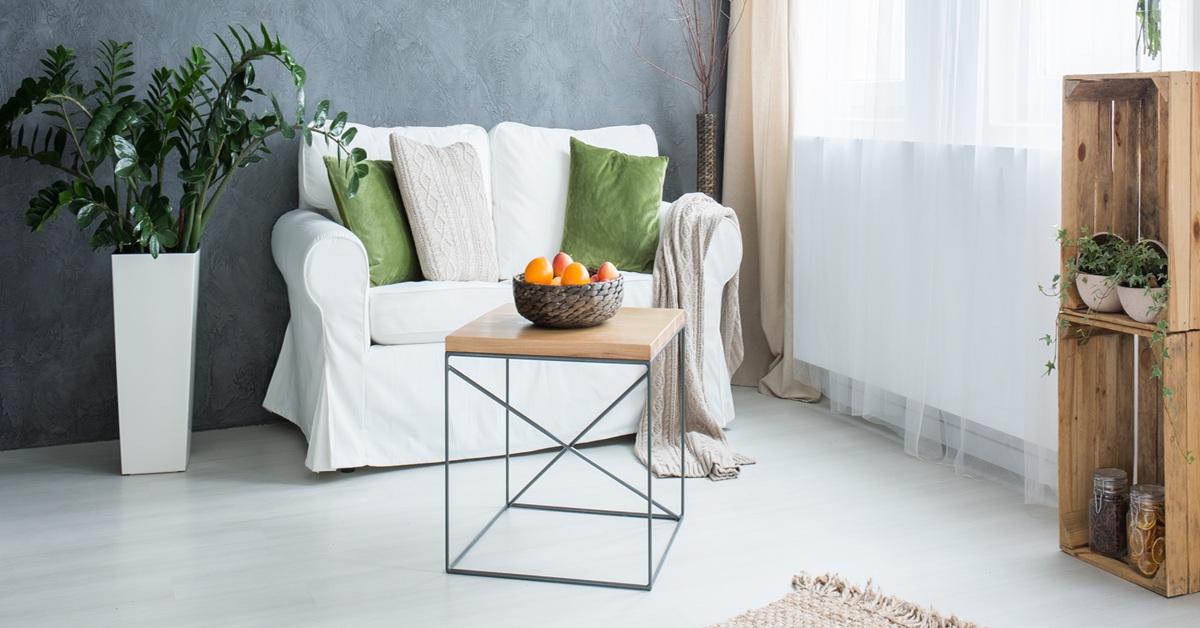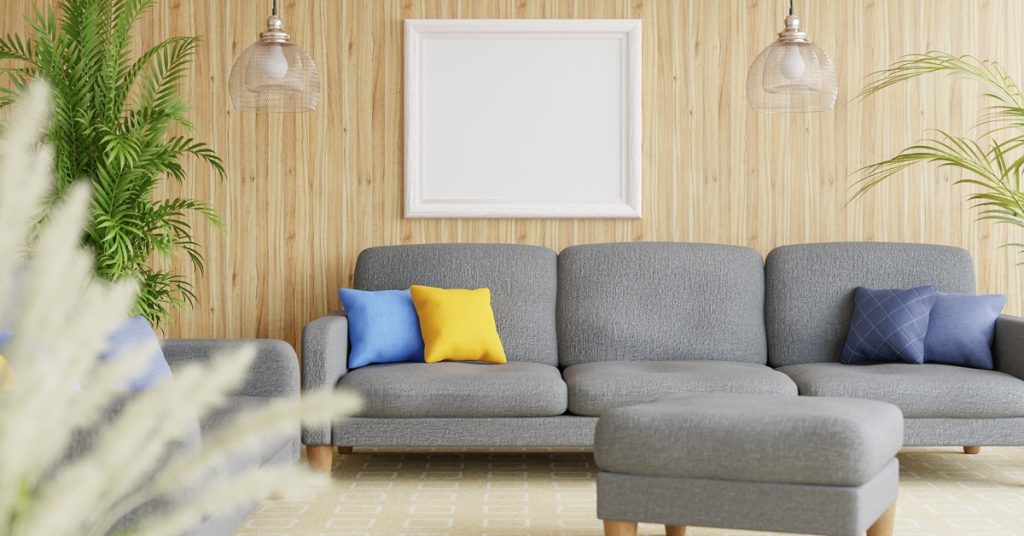Introduction
When it comes to selecting materials for your interior design or construction projects, the choices can be overwhelming. Medium-density fiberboard (MDF) and plywood are two of the most popular and versatile options available. Each material has its unique properties, advantages, and disadvantages. Understanding these can help you make an informed decision tailored to your specific needs. In this blog, we’ll explore the characteristics, benefits, and best uses of MDF and plywood, allowing you to choose the right material for your project.
What is MDF?
Medium-density fiberboard (MDF) is an engineered wood product made by breaking down hardwood or softwood residuals into wood fibres. These fibres are then combined with wax and a resin binder and formed into panels by applying high temperature and pressure. MDF is known for its smooth, uniform surface and is often used in furniture, cabinetry, and decorative projects.
Advantages of MDF
- Smooth Surface: MDF has a smooth and uniform surface, making it ideal for painting and veneering. It provides a clean, consistent finish without the grain patterns seen in natural wood.
- Ease of Machining: MDF can be easily cut, drilled, and shaped without splintering. This makes it a favourite for intricate designs and detailed work.
- Affordability: Generally, MDF is less expensive than plywood, making it a cost-effective option for many projects.
- Availability: MDF is widely available in various sizes and thicknesses, making it versatile for different applications.
- Stability: MDF does not expand or contract with changes in humidity and temperature as much as natural wood, reducing the risk of warping.
Disadvantages of MDF
- Moisture Sensitivity: MDF is highly susceptible to moisture and can swell or deteriorate if exposed to water. It is not recommended for use in high-humidity areas or outdoor applications.
- Weight: MDF is denser and heavier than plywood, making it more challenging to handle and transport.
- Strength: MDF is not as strong as plywood and can be more prone to sagging under heavy loads.
- Health Concerns: MDF contains formaldehyde, which can off-gas and pose health risks if not properly sealed or finished.
What is Plywood?
Plywood is another engineered wood product, made by gluing together thin layers of wood veneers. These layers, or plies, are arranged with the grain of each layer perpendicular to the one below it, which enhances the strength and stability of the panel. Plywood is available in various grades and types, each suited to different applications.
Advantages of Plywood
- Strength and Durability: The cross-grain construction of plywood gives it superior strength and resistance to warping, making it suitable for structural applications.
- Versatility: Plywood comes in a wide range of thicknesses, grades, and types (e.g., softwood, hardwood, marine), making it versatile for many uses.
- Moisture Resistance: While not entirely waterproof, plywood is more resistant to moisture than MDF, especially if treated or made from marine-grade materials.
- Natural Appearance: Plywood maintains the natural look of wood, with visible grain patterns that can be aesthetically pleasing.
- Lightweight: Compared to MDF, plywood is generally lighter, making it easier to handle and install.
Disadvantages of Plywood
- Cost: High-quality plywood can be more expensive than MDF, particularly for specialized types like marine plywood.
- Surface Uniformity: Plywood can have knots, voids, and other imperfections, which might require additional finishing work for a smooth appearance.
- Workability: While still relatively easy to work with, plywood can splinter or chip when cut, and the edges may need extra sanding or sealing.
Comparing MDF and Plywood
Strength and Durability
- MDF: While MDF is strong enough for many interior applications, it is not as robust as plywood. It is more prone to sagging under weight and is susceptible to damage from moisture and impacts.
- Plywood: Plywood’s layered construction provides excellent strength and durability. It is better suited for structural applications and environments where durability is critical.
Workability
- MDF: MDF’s smooth surface and consistent density make it easy to machine and shape, which is ideal for detailed work and custom designs.
- Plywood: Plywood can be more challenging to work with due to its potential for splintering and chipping. However, it is still a versatile material that can be cut and shaped with the right tools and techniques.
Aesthetic Qualities
- MDF: MDF offers a smooth, uniform surface that is perfect for painting and laminating. It does not have natural wood grain, which can be a disadvantage for projects requiring a wood-like appearance.
- Plywood: Plywood’s natural wood grain can enhance the aesthetic appeal of furniture and interiors. It can be stained or varnished to highlight the wood’s beauty, making it a desirable choice for visible applications.
Moisture Resistance
- MDF: MDF is highly susceptible to moisture damage and should not be used in high-humidity areas or for outdoor projects.
- Plywood: Plywood is more resistant to moisture, especially marine-grade or treated plywood. It can be used in environments with moderate humidity and for some outdoor applications with proper treatment.
Cost
- MDF: MDF is generally more affordable than plywood, making it a budget-friendly option for many projects.
- Plywood: Plywood can be more expensive, particularly for higher grades and specialised types. However, its strength and versatility can justify the cost for certain applications.
Know more about choosing the right plywood for your projects and make informed decisions that add both strength and elegance to your interiors.
Best Uses for MDF and Plywood
MDF Applications
- Interior Furniture: MDF is ideal for making indoor furniture like bookshelves, cabinets, and wardrobes due to its smooth finish and ease of customisation.
- Decorative Projects: Its ease of machining makes MDF perfect for intricate mouldings, trim work, and other decorative elements.
- Painted Surfaces: MDF’s smooth surface is excellent for painted projects, providing a uniform and flawless finish.
Plywood Applications
- Structural Components: Plywood’s strength and stability make it suitable for flooring, roofing, and wall sheathing in construction projects.
- Cabinetry and Shelving: Plywood is a popular choice for kitchen cabinets, shelves, and storage units due to its durability and aesthetic appeal.
- Outdoor Projects: Treated or marine-grade plywood can be used for outdoor furniture, decking, and other applications exposed to the elements.
Making the Right Choice
When choosing between MDF and plywood, consider the specific requirements of your project:
- Environment: If your project will be exposed to moisture or requires high durability, plywood is the better choice. For indoor applications where a smooth, painted finish is desired, MDF is suitable.
- Strength Requirements: For structural components or heavy-load applications, plywood’s superior strength is essential. MDF is more appropriate for lightweight, decorative items.
- Aesthetic Preferences: If you want a natural wood grain appearance, plywood is the way to go. MDF is better for projects where a smooth, uniform surface is needed.
- Budget: MDF is generally more cost-effective, while plywood offers better performance for certain applications. Balance your budget with the specific needs of your project to make the best choice.
Transform every corner of your home with high-quality plywood that blends strength with style, ensuring your furniture lasts for years.
Conclusion
Both MDF and plywood have their unique advantages and are suitable for different applications. MDF is excellent for detailed, decorative work and projects requiring a smooth finish, while plywood is ideal for structural components and areas where strength and moisture resistance are important. By understanding the characteristics and benefits of each material, you can make an informed decision that ensures the success and longevity of your project. Whether you’re building furniture, cabinetry, or structural elements, choosing the right material will contribute to the overall quality and durability of your work.
Choose Wigwam Ply for furniture that doesn’t just look good today but stands strong and stylish for generations to come.
FAQS
- Which is better for furniture, MDF or plywood?
Plywood is generally better for furniture that needs durability and strength, such as beds, wardrobes, and cabinets. MDF, on the other hand, is a great choice for decorative furniture pieces, mouldings, and surfaces that will be painted, since it has a smooth, uniform finish.
- Can MDF be used in kitchens and bathrooms?
MDF is not recommended for high-moisture areas like kitchens and bathrooms, as it swells and deteriorates when exposed to water. Instead, water-resistant or marine-grade plywood is a better choice for these spaces.
- Is MDF more affordable than plywood?
Yes, MDF is usually less expensive than plywood. However, the cost difference comes with trade-offs: MDF is heavier and less durable, while plywood offers better strength and moisture resistance.
- Which material is more eco-friendly, MDF or plywood?
Both materials are engineered wood products, but MDF often contains formaldehyde-based resins, which can emit VOCs if not sealed properly. Plywood can also contain adhesives but tends to have lower emissions, especially when certified by standards like CARB or FSC. Choosing certified, eco-friendly plywood is often the greener option.
- Can MDF and plywood be painted or laminated?
Yes, both materials can be painted or laminated. MDF is excellent for painted finishes due to its smooth surface, while plywood provides a natural wood grain look that works well with stains, veneers, and laminates.

